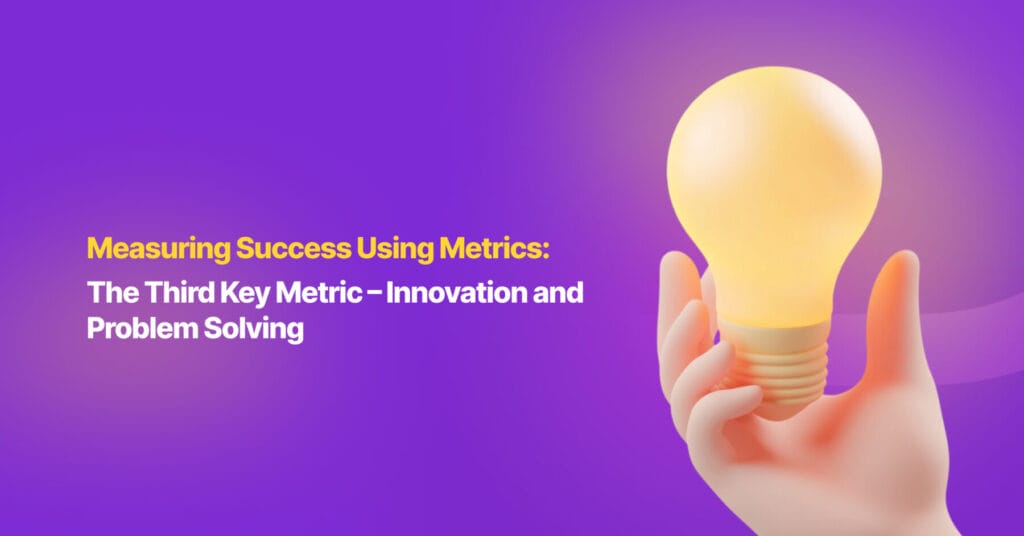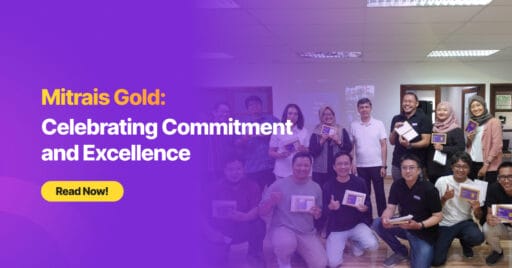This article is part 4 of our series on measuring success using metrics to assess the performance of augmented software teams. If you haven’t yet read part 1, we highly recommend starting there for an overview of the essential metrics for effectively managing software development projects, particularly in outsourced settings.
Innovation and effective problem solving are the driving forces behind the success of any tech project. In the competitive world of software development, especially within outsourced teams, fostering and measuring these attributes is crucial for maintaining a competitive edge and ensuring project success.
Introduction
Innovation and problem solving in the tech industry are not just about having great ideas—they are about turning those ideas into reality and overcoming challenges effectively. These skills enable teams to deliver unique solutions, improve processes, and respond to issues swiftly, making them essential for any software development project.
In this article, we will explore how innovation and problem-solving capabilities can be quantified using the following metrics: Number of Successful Innovations/Ideas, Idea Implementation Rate, Problem Resolution Time, and Number of New Ideas or Proposals Submitted.
Detailed Metrics Analysis
1. Problem Resolution Time
Problem Resolution Time measures the duration taken to resolve an issue from the moment it is identified until it is fully resolved. This metric is crucial for maintaining project momentum and minimising downtime caused by problems.
How to Measure Problem Resolution Time:
- Track Time per Issue: Measure the time taken to resolve each problem, from identification to closure, for precise tracking.
- Calculate Average Resolution Time: Find the average resolution time over a specific period (e.g. weekly or monthly) to assess overall efficiency.
- Segment by Issue Type: Track resolution time separately for different issue types (e.g.
,critical, minor) to understand how severity affects response.
- Monitor Long-Term Trends: Track resolution time over a period to spot patterns or improvements in problem-solving efficiency.
- Use Automated Tracking Tools: Use project management or issue tracking tools (e.g.
,Jira, Asana) to automatically log timestamps when issues are opened and closed.
Practical Advice:
- Implement a Clear Escalation Path: Define and document steps for escalating issues to ensure they are resolved efficiently.
- Set Prioritisation Guidelines: Establish guidelines to prioritise issues based on urgency, helping the team focus on critical problems first.
- Analyse Root Causes: Regularly review resolved issues to identify recurring problems and address their root causes.
- Use SLAs to Set Expectations: Set Service Level Agreements (SLAs) for issue resolution times to manage expectations and improve response.
- Hold Problem-Solving Workshops: Organise workshops to share problem-solving techniques and improve team skills in tackling complex issues.
2. Number of New Ideas Submitted
The Number of New Ideas Submitted reflects innovative thinking within the team. During the Retrospective event, team members often discuss what went well, the problems encountered, and how to improve strategies regarding people, interactions, processes, tools, and the Definition of Done. It shows how often team members contribute new proposals or solutions, indicating a culture of creativity and continuous improvement. The most impactful of the new proposals or solutions are addressed as soon as possible.
How to Measure Number of New Ideas Submitted:
- Count Submitted Ideas: Track the total number of ideas submitted by team members within a defined period (e.g.
,monthly or quarterly).
- Categorise Ideas by Type: Organise ideas into categories (e.g. product features, process improvements, cost savings) to analyse areas of focus.
- Track Idea Source: Record which team members or departments are contributing ideas to identify innovation champions.
- Separate by Implementation Stage: Track ideas from submission to implementation stages to understand conversion rates.
- Measure Quality Alongside Quantity: Track how many ideas are actionable or valuable to avoid focusing solely on the number of ideas.
Practical Advice:
- Encourage a No-Judgment Zone: Foster an environment where all ideas are welcomed without immediate criticism, encouraging team members to share freely.
- Reward Idea Submission: Recognise and reward employees who regularly submit valuable ideas to promote continuous innovation.
- Provide a Platform for Idea Sharing: Use a dedicated tool (e.g. Slack channel, Trello board) for team members to easily submit and discuss new ideas.
- Organise Brainstorming Sessions: Hold regular brainstorming sessions to stimulate creative thinking and collaborative problem-solving.
- Track Idea Conversion Rate: Measure how many ideas move forward to implementation to ensure that high-quality ideas are being acted on.
3. Idea Implementation Rate
The Idea Implementation Rate measures the percentage of new ideas that are actually implemented. It highlights how effectively the team can turn creative concepts into actionable solutions that contribute to the project’s goals. These ideas could represent a new feature, an enhancement of an existing feature, a new or improved approach to solving a problem, or the establishment of a new standard. These ideas may take the form of user stories, bugs, tasks, or events that contribute to updating the Definition of Done. As needed, these ideas should be refined and clarified when new opportunities arise, ensuring team members are able to work with up to date and well-defined ideas during implementation.
How to Measure Idea Implementation Rate:
- Calculate the Percentage of Ideas Implemented: Divide the number of implemented ideas by the total number of submitted ideas, then multiply by 100.
- Segment by Idea Type: Track implementation rate separately for different types of ideas (e.g. technical improvements, feature ideas).
- Track Implementation Time: Measure how long it takes from idea submission to implementation to assess efficiency.
- Monitor Changes in Rate Over Time: Track the rate over multiple periods to see if the team is improving in converting ideas to action.
- Consider Rejected Ideas: Track why certain ideas were rejected or postponed improving the quality of future submissions.
Practical Advice:
- Set Clear Criteria for Implementation: Define criteria for selecting ideas to ensure only valuable and feasible ideas are implemented.
- Create an Idea Pipeline: Develop a structured process for moving ideas from submission through to review, prioritisation, and implementation.
- Allocate Resources for Implementation: Dedicate time and resources specifically for implementing innovative ideas to avoid bottlenecks.
- Celebrate Implemented Ideas: Publicly recognise and celebrate ideas that have been successfully implemented to motivate further innovation.
- Seek Stakeholder Feedback: Before implemention, get feedback from stakeholders to ensure the idea aligns with project goals and client needs.
- Ideas Refinement Session: Provide a session for clarification of fast changing ideas. It will allow the team to deliver value efficiently while staying aligned with stakeholder expectations.
- Frequent Value Delivery: The Team should ensure that potentially shippable values of the product are delivered at regular intervals, allowing stakeholders to see progress and derive value faster.
- Promotes Transparency: Team must ensure that everyone knows the status of any idea implementation, and any potential impediments.
4. Number of Successful Innovations/Ideas
The Number of Successful Innovations/Ideas tracks how many new ideas have been successfully implemented and have positively impacted the project or client’s goals. This metric shows the tangible results of the team’s creativity and problem-solving efforts.
How to Measure Number of Successful Innovations/Ideas:
- Count Implemented Innovations with Impact: Track the number of new ideas that were successfully implemented and had a positive impact.
- Define Success Metrics: Set specific criteria for what constitutes a “successful” innovation (e.g. cost savings, efficiency gains, improved satisfaction).
- Monitor Performance Metrics Post-Implementation: Track performance indicators (e.g. user satisfaction, speed improvement) after an idea is implemented to assess its success.
- Segment by Impact Type: Separate successful innovations by impact type (e.g. revenue growth, operational efficiency) to understand their contributions.
- Evaluate Short and Long-Term Impact: Track how long the benefits of each innovation last to assess sustained value.
Practical Advice:
- Document Success Stories: Record the outcomes and benefits of each successful innovation to inspire further innovation and provide a reference for future projects.
- Establish Best Practices: Share successful innovations as best practices across teams to improve overall productivity and creativity.
- Analyse Return on Investment (ROI): Evaluate the ROI of successful innovations to prioritise future ideas with high potential.
- Use as a Motivational Tool: Highlight successful innovations in team meetings or newsletters to boost morale and encourage more innovative thinking.
- Set Innovation Goals: Define specific goals for the number of successful innovations to encourage proactive problem-solving and creativity.
Conclusion
Innovation and effective problem-solving are essential for maintaining a competitive edge and achieving project success in the tech industry. By focusing on metrics such as Problem Resolution Time, Number of New Ideas Submitted, Idea Implementation Rate, and Number of Successful Innovations/Ideas, teams can foster a culture of continuous improvement and creativity.
Integrating these metrics into the framework of outsourced software development projects helps in enhancing outcomes by encouraging proactive problem-solving and innovative thinking. Measuring these aspects not only improves project efficiency but also adds significant value to clients by delivering unique and effective solutions.
Ready to boost your team’s innovation and problem-solving capabilities? Contact us to learn more about integrating these metrics into your software development projects.






